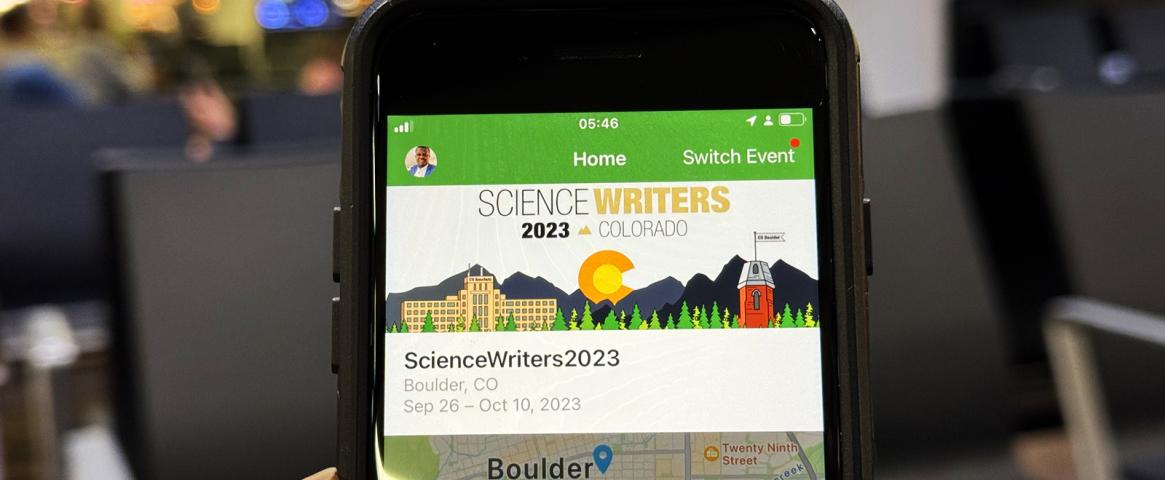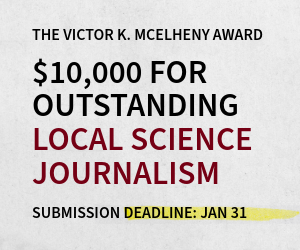Story by Guananí Gómez-Van Cortright
Photography by Paul Adepoju
Fish populations in Arctic rivers have been decimated by offshore fishing and climate change, threatening Alaska Native and First Nation communities who subsist on salmon and other river species.
The Arctic Rivers Project, funded by the National Science Foundation, aims to investigate how climate change is impacting Alaska by combining river and fisheries monitoring with traditional Indigenous ecological knowledge. Now, scientists and decision makers from Western and Indigenous knowledge bases are collaborating on research questions, fisheries management, data collection and how to share and communicate their findings. But making these scientific collaborations successful — and respectfully covering them as science journalists — requires slowing down and taking the time to cultivate relationships and cultural understanding.
At the ScienceWriters2023 national conference, the “Knowledge Co-Production and Co-Management of Arctic Rivers” Science + Science Writing session dove into these recommendations. Convened by CASW, panelists representing scientists, Indigenous fishery leaders and journalists gathered to discuss what it takes for these collaborations to succeed.
“Leaning heavily upon Indigenous observation networks fills a really important gap, particularly for us Western-taught scientists, to understand ecosystems,” said Keith Musselman, assistant professor at University of Colorado Boulder’s Institute of Arctic and Alpine Research.
Sharing Knowledge
The Arctic Rivers project works in the Yukon River and the Kuskokwim River in Alaska, monitoring endangered salmon populations and how they are impacted by climate change. Since 2016, the Kuskokwim Inter-Tribal Fish Commission, which represents 33 Tribes, has managed the river’s fisheries in partnership with U.S. Fish and Wildlife Service, a U.S. federal regulatory agency.
In the past, scientists were using minimal metrics, such as fish counts, to make critical management policy decisions for Arctic river fisheries. In collaboration with the Kuskokwim Inter-Tribal Fish Commission, monitoring now integrates knowledge from local Indigenous observers taking note of river ice depth, snow depth, water levels, bird migration patterns, and even mosquito behavior to track and predict fish populations in a given year and adjust fishery decisions accordingly.
“This is a good example of co-management, what things can look like when you're working with local people, getting local people's observations in the decision making process,” said Kevin Whitworth, executive director of the Kuskokwim Inter-Tribal Fish Commission. Whitworth is Deg Hit’an Athabascan and a Tribal member of McGrath Native Village.
Time for tea
The assumptions and biases built into a journalist deciding what a story is ahead of time, pitching it to an editor, and coming in with a list of questions can lead to superficial and biased reporting when it comes to Indigenous communities and ecological knowledge.
“Journalism is very rooted in Western culture,” said Jane Palmer, a freelance journalist who has covered Indigenous ecological knowledge and knowledge co-production involved with the Arctic Rivers Project and elsewhere.
Palmer emphasized the importance of journalists taking the time to get to know and build relationships with the communities they’re covering. This includes a more collaborative approach to working with sources than is traditionally taught, as well as making sure to thank them for sharing their knowledge and following up after a story is published, asking what you can do as a journalist to benefit the community and asking what they want to be covered in the future.
“If you're going to report on Indigenous issues, you have to understand the value system,” said Palmer. “Step number one is to just listen.”
Instead of trying to build trust and relationships with sources by cold emailing, the panelists emphasized the necessity of taking the time to understand the communities you’re writing about, and the power of showing up and making introductions in person.
“In this learning about the culture, that's very important,” said Whitworth. “Make sure to have time for tea.”
Guananí Gomez-Van Cortright (www.guananigomezvancortright.com) is a freelance science writer and microbe enthusiast based in San Francisco, Calif.
Paul Adepoju (@pauladepoju) is a freelance journalist and editor, author, and media trainer based in England, with bylines in health and medical stories for Nature, Scientific American, Devex, Insider, The Lancet, Health Policy Watch, New Scientist, and other publications.
This ScienceWriters2023 conference coverage article was produced as part of the NASW Conference Support Grant awarded to Gómez-Van Cortright and Adepoju to attend the ScienceWriters2023 national conference. Find more 2023 conference coverage at www.nasw.org
A co-production of the National Association of Science Writers (NASW), the Council for the Advancement of Science Writing (CASW), University of Colorado Boulder, and the University of Colorado Anschutz Medical Campus, the ScienceWriters2023 national conference featured an online portion Sept. 26-Oct. 3, followed by an in-person portion held in Boulder and Anschutz, Colo., Oct. 6-10. Learn more at www.sciencewriters2023.org and follow the conversation on social media at #SciWri23
Credits: Reporting by Guananí Gómez-Van Cortright; edited by Ben Young Landis. Photography by Paul Adepoju; edited by Ben Young Landis.




